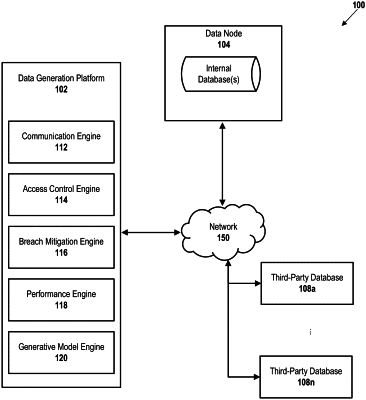| CPC G06F 11/3608 (2013.01) [G06F 8/41 (2013.01)] | 20 Claims |

|
1. A non-transitory computer-readable storage medium comprising instructions thereon, wherein the instructions when executed by at least one data processor of a system, cause the system to:
receive, from a user device, an output generation request including an input for generation of an output using a first large-language model (LLM);
provide the input to the first LLM to generate the output;
determine that the output includes a first code sample for a software routine;
in response to determining that the output includes the first code sample, provide the input, an indication of the first LLM, and the first code sample to a parameter generation model to generate validation test parameters,
wherein the validation test parameters include (1) compilation instructions, (2) a virtual machine configuration, and (3) validation criteria;
configure, based on the virtual machine configuration, a virtual machine environment of the system;
compile, within the virtual machine environment and using the compilation instructions, the first code sample to generate a set of executable instructions for the software routine;
execute, within the virtual machine environment, the set of executable instructions for the software routine to generate a test output;
determine a validation indicator specifying whether the test output satisfies the validation criteria;
in response to determining that the test output satisfies the validation criteria, transmit the output to a server system enabling access to the output by the user device; and
in response to determining that the test output does not satisfy the validation criteria:
based on the validation indicator, generate a modified output including a second code sample different from the first code sample; and
transmit the modified output to the server system to enable access to the modified output by the user device.
|